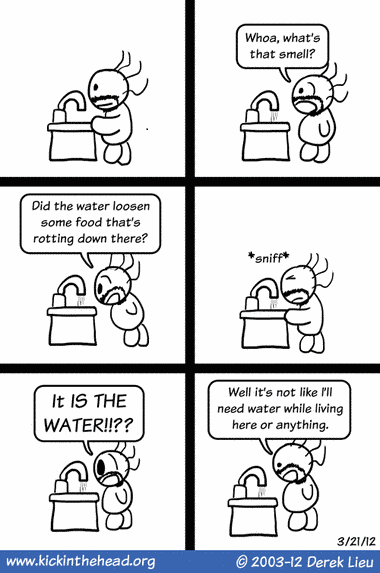Start your free evaluation today!
203.272.6017
1.800.628.6891
Refer A Friend for a $25 giftcard
Sulfer
Water containing hydrogen sulfide gas ("H2S"), has a distinctive "rotten egg" odor, which may be especially noticeable when running hot water. Such water can discolor coffee, tea and other beverages, and alter the appearance and taste of cooked foods. Hydrogen sulfide ("H2S") gas is a nuisance that is not usually a health risk at concentrations normally found in household water.
Hydrogen sulfide can be toxic. Usually the gas can be detected long before it reaches harmful concentrations. H2S is flammable and poisonous. While such concentrations are not common, if gases are released in a confined area, they could cause nausea, illness, and in extreme cases, death.
H2S dissolved in water can corrode plumbing metals, such as iron, steel, copper and brass and exposed metal parts in washing machines and other water-using appliances. The corrosion of iron and steel from hydrogen sulfide forms ferrous sulfide or "black water" which can darken silverware and discolor copper and brass utensils. Hydrogen sulfide can also interfere with the effectiveness of water softeners and filter systems.
Sources of Hydrogen Sulfide
Iron bacteria and sulfur bacteria present in groundwater use iron and sulfur as an energy source and chemically change sulfates to produce H2S gas. These bacteria use the sulfur available from decaying plants, rocks, or soil and often thrive in an iron-rich environment. The harmless non-toxic bacteria normally exist in oxygen-deficient environments, such as deep wells and plumbing systems. The bacteria do not usually cause health problems, but contribute to bad tastes and/or odors at low levels.
Hydrogen sulfide gas may also be present naturally in wells drilled in shale or sandstone, near coal or peat deposits, or in oil fields. Though H2S is normally found in wells, it can also enter surface water through springs and quickly escape into the atmosphere. Often water heaters can also become a source of foul H2S odors. The magnesium rod used in heaters for corrosion control can chemically reduce sulfates to H2S. Another source of H2S is from sewage pollution.



